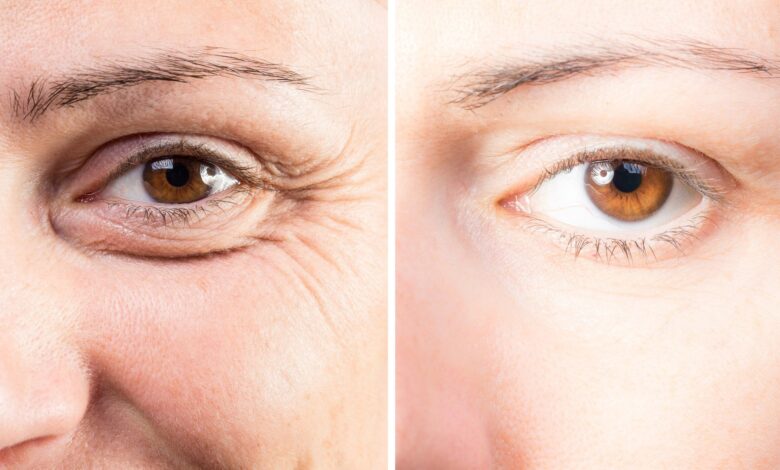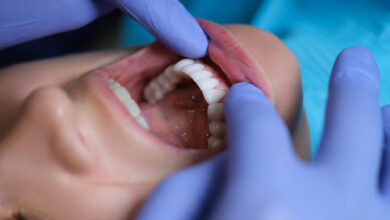The Road to Rejuvenation: Are You Eligible for Eyelid Surgery?

Are you unhappy with how heavy your eyelids are? Do they interfere with your vision, especially when you’re falling asleep? Have you always wanted to hide behind glasses because your eyelids get in the way of everything?
Well, then, you might need eyelid surgery.
It’s not just for celebrities, either. Studies have found that cosmetic procedures are on the rise and that many patients seek different kinds of surgery.
But do you know how to qualify for eyelid surgery? What do you need to be prepared for?
It’s easier than you think. This is how to qualify to get eyelid surgery.
Consultation with a Specialist
The first and most crucial step on your journey to eyelid surgery is setting up a consultation with a specialist. This specialist is a board-certified blepharoplasty surgeon or ophthalmologist who can assess your unique situation. During this consultation, they’ll dig into your medical history and health, examine your eyelids, and discuss your expectations.
Why is this important? Well, it’s like the initial check-in before a long flight. You want to make sure everything’s good to go before you take off.
Your specialist will examine your eyelids to determine if they meet the criteria for blepharoplasty. They’ll also ask about any chronic medical conditions, medications you’re taking, and whether you have any existing eye problems.
Age Consideration
Age is another vital factor when it comes to qualifying for eyelid surgery. Typically, you need to be at least 18 years old to undergo this procedure.
But, there’s a catch – the ideal age can vary from person to person. Some folks might develop eyelid issues earlier in life than others.
The thing is your age affects how your eyelids behave. As we get older, our skin loses elasticity, and that can cause sagging and drooping. If you’re younger but experiencing these problems due to genetics or other factors, you might still qualify for blepharoplasty.
Eyelid Concerns
Now, let’s get into the nitty-gritty of why you might qualify for eyelid surgery – your eyelid concerns. This procedure is designed to address specific issues like sagging upper eyelids, puffiness under the eyes, and excess skin or fat deposits around your peepers. These concerns can make you look tired or older than you feel, and blepharoplasty can help turn back the clock.
So, why is this step important? Because it’s the heart of the matter.
To qualify for eyelid surgery, you need to have real eyelid issues that this procedure can fix. You might be tempted to seek it out for other reasons, but it’s crucial to have realistic expectations about what blepharoplasty can achieve.
Additionally, if you’re experiencing eyelid concerns, you may be dealing with a condition called dermatochalasis. This condition can lead to drooping eyelids and other problems that blepharoplasty can address. If you want to learn more about it, read more about dermatochalasis here.
Non-Smoking Requirement
One of the most crucial qualifications for eyelid surgery is being willing to quit smoking before and after the procedure. Smoking can have detrimental effects on the healing process and increase the risk of complications during and after surgery. Therefore, many surgeons require candidates to abstain from smoking for a specified period.
Nicotine and other chemicals in cigarettes can constrict blood vessels, reducing the flow of oxygen to tissues. This can lead to slower wound healing, increased risk of infection, and potential scarring. To ensure a safe and successful outcome, it’s essential to follow your surgeon’s advice about smoking cessation.
Realistic Expectations
It’s crucial to understand that eyelid surgery, like any cosmetic procedure, has its limitations. While it can enhance your appearance and address specific concerns, it won’t transform you into an entirely different person.
Having realistic expectations is essential to ensure you’re satisfied with the results and avoid potential disappointment. During your consultation with the surgeon, openly discuss your goals and what you hope to achieve with eyelid surgery. They will provide you with a realistic assessment of what the procedure can and cannot do for you.
Your surgeon will also discuss the recovery process and any potential side effects or complications. Understanding these aspects in advance will help you mentally prepare for the surgery and recovery.
Financial Considerations
Unlike medically necessary procedures, blepharoplasty is considered a cosmetic surgery and may not be covered by insurance. As a result, you should be financially prepared for the associated costs.
The total cost of eyelid surgery includes the surgeon’s fees, facility charges, anesthesia, and post-operative care. It’s essential to discuss these expenses with your surgeon during the consultation phase.
Ask for a detailed breakdown of the costs and explore payment options that fit your budget. Some surgeons offer financing plans to help make the procedure more affordable.
Recovery Time
The final critical step in qualifying for eyelid surgery is understanding the recovery process and being prepared for it. After the procedure, you can expect some downtime and a healing period that can last several weeks. It’s essential to be aware of what to expect during this time.
During the recovery period, you may experience swelling, bruising, and discomfort around the eyelids. Following your surgeon’s post-operative instructions is essential for a smooth recovery. This may include taking prescribed medications, avoiding strenuous activities, and caring for the surgical site as instructed.
In some cases, you may need to take time off from work or other daily activities to allow your body to heal. Planning for this downtime and having a support system in place can make the recovery process more manageable.
The Ultimate Guide on How to Qualify for Eyelid Surgery
In conclusion, the process on how to qualify for eyelid surgery requires a thorough evaluation by a qualified medical professional. It is important to have realistic expectations and understand the potential risks and benefits of the procedure. If you are considering eyelid surgery, schedule a consultation to discuss your options and find out if it is right for you.
Don’t wait any longer, take the first step toward achieving the look you desire. Book your consultation today!
Did this guide help you? Want to learn more about new topics? Visit our other blog posts to see what we offer and how we can help you.
You Might Also Like:




